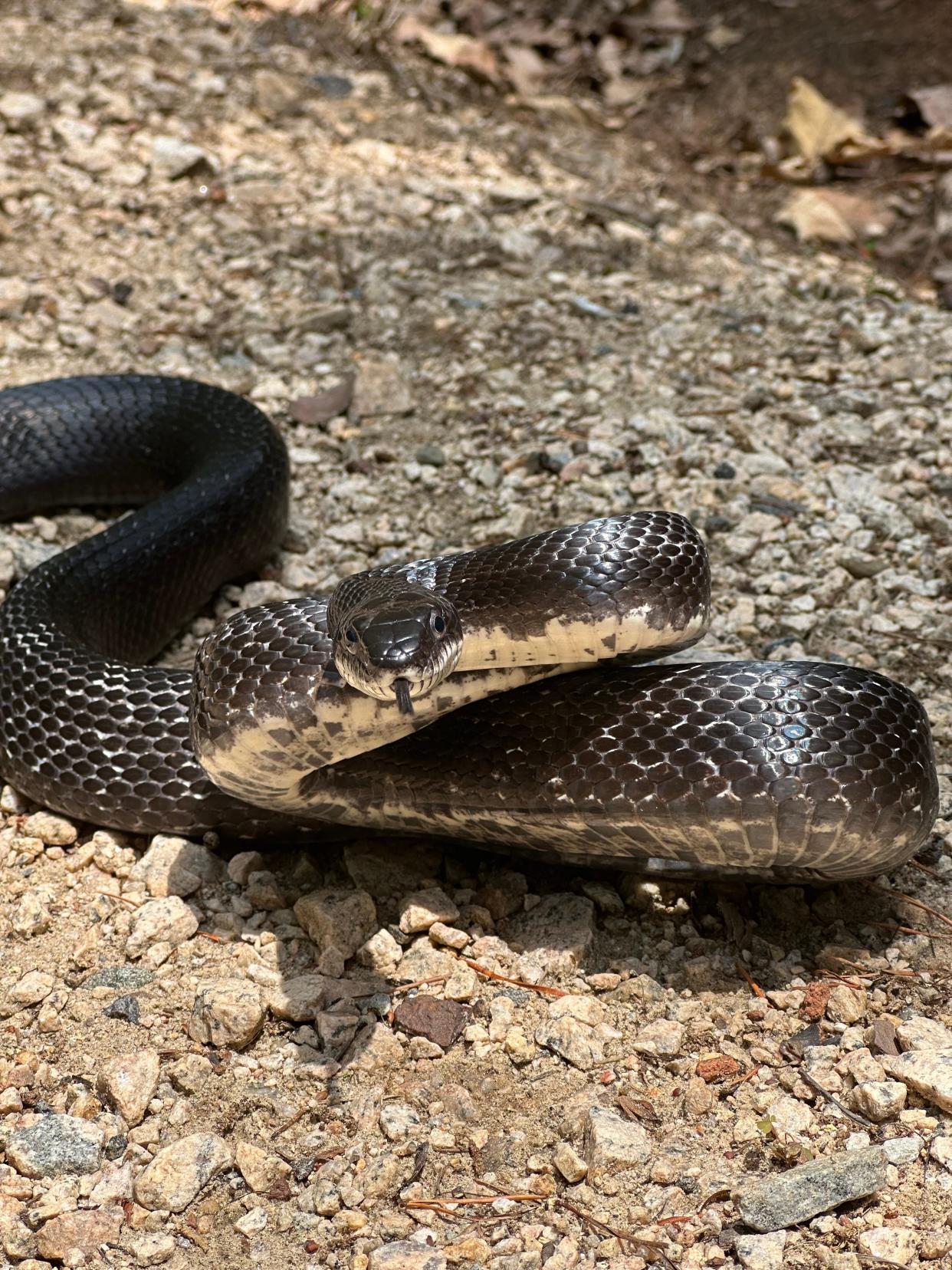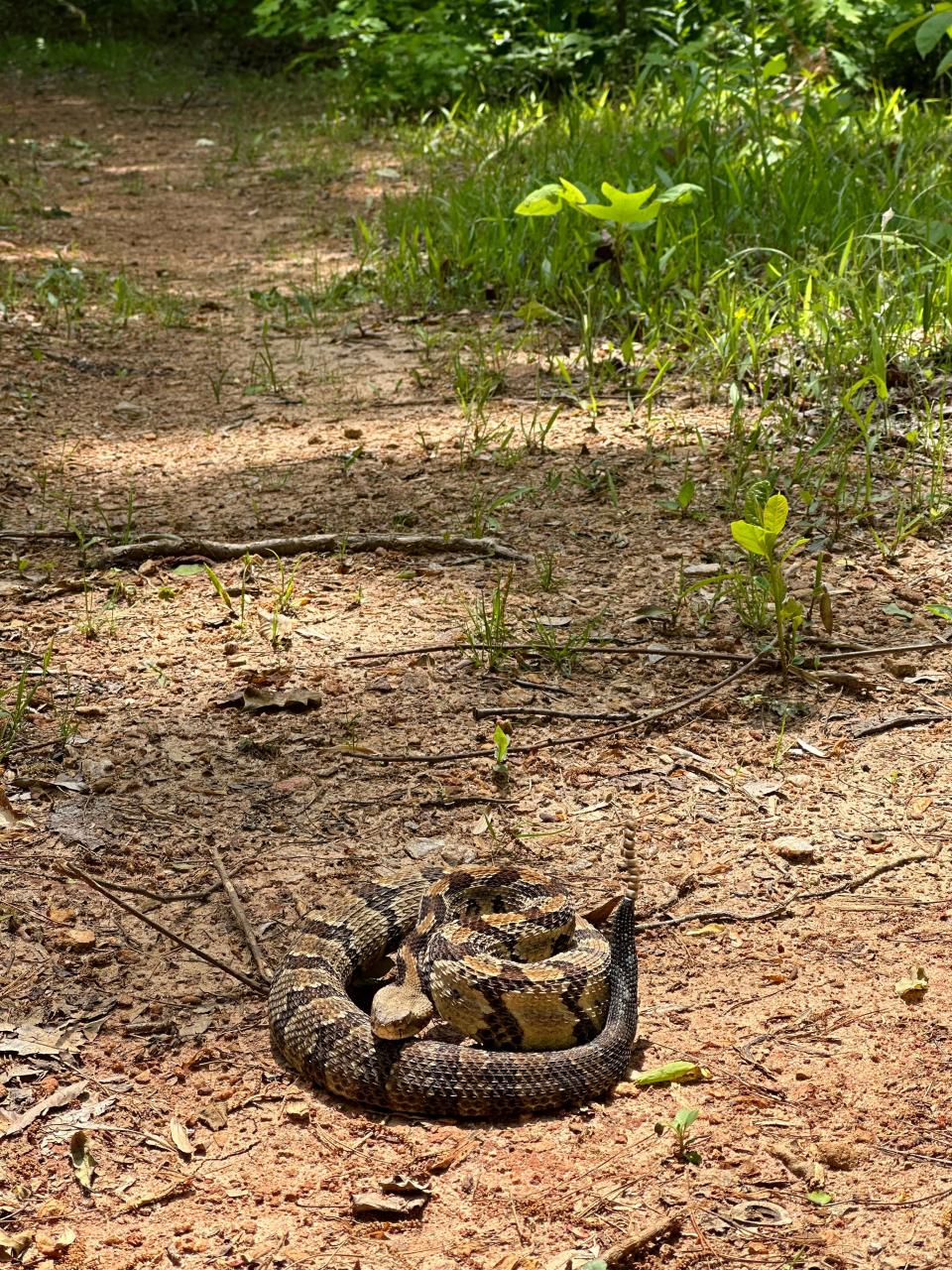Snake season is here. Tips on how to be safe and coexist.

It’s that time of year when sunshine and warmer temperatures bring out the wildlife, including snakes.
Commonly feared and misunderstood, the reptiles serve a valuable role in the ecosystem, and the state of North Carolina boasts 38 different kinds of snakes.
Amanda Lasley, South Mountains Park superintendent, said there are a variety of snakes around the area, most of them harmless to humans.
In the past few weeks she has encountered ring-necked, milk and eastern hognose snakes as well as a timber rattlesnake.
“The only two venomous snakes found in the South Mountains of North Carolina are the copperhead and timber rattlesnake,” she said. “They are pit vipers, using heat sensing to find their prey.”
Lasley had some safety tips to offer to help humans and snakes coexist.
“The safest thing for people to do is to be aware and to never attempt to handle a snake,” she said. “Most snake bites occur on hands when people try to pick them up or are reaching into an area they can’t see a snake, like under a rock, bush or construction materials that may be out in the yard. Other bites occur on dog noses when dogs are left unattended or unleashed in wild areas.”
If a snake happens to get into your house, call animal control for safe removal.
She said snakes are reptiles and depend on the warmth of the sun and their surroundings to aid in digestion, which means they can often be found sunning themselves on rocks, bricks or pavement. They can also be found in brush piles, wood piles, in or near outbuildings or anywhere that provides shelter or food, such as rodents or bird eggs.
“Let them be, and they will likely go about their own snake business - survival,” Lasley said.
According to the NC Wildlife Resources Commission, snakes are an important part of our environment, keeping populations of pests such as rodents, slugs, and insects in check. Plus, snakes are a food resource to other animals such as foxes, raccoons, bears, eagles, hawks and owls.
Like all wildlife species, snakes should be admired and respected, and left alone. Killing a snake is not only unnecessary but also could be illegal.

Facts about snake from the NC Wildlife Resources Commission
There are 38 species of snakes in North Carolina, six of which are venomous.
Venomous snakes include the Copperhead, Cottonmouth, Timber Rattlesnake, Eastern Diamondback Rattlesnake, Pigmy Rattlesnake, and the Eastern Coral Snake.
The Copperhead is the most common and widespread venomous snake in North Carolina, occurring in both rural and urban environments.
Four of the six are protected species in North Carolina, and as such, should not be handled or disturbed: the Timber and Pigmy Rattlesnakes are both species of special concern, while the Eastern Diamondback Rattlesnake and Eastern Coral Snake are both endangered.
Tips to prevent conflict with snakes
Declutter your yard. Snakes seek out areas with thick cover where rodents and other prey species are likely to be found. Keeping bushes and plants around your home trimmed and clearing out piles of rock, wood, and other debris will make your property less appealing for snakes.
Remove entry points. Discourage snakes from entering your home by closing gaps and holes. Repair damage to siding and foundations and permanently seal openings under doors, windows, and around water pipes. Securing your home will help keep snakes (and other wildlife) out of your living space.
Be aware of your surroundings. As you go for walks outside, do yard work, or work in the garden, be aware that snakes could be in the area. Being prepared for the possibility of encountering a snake and watching where you step and place your hands can minimize the chance of you disturbing or stepping on a snake.
Educate yourself and others. Stay a respectful distance away. Learning how to identify the species of snakes that commonly occur in your area will help during an encounter. A good online resource for identifying snakes can be found at herpsofnc.org. If you see a snake and would like help in identifying the species, you can email photos to wrccomments@ncwildlife.org.
If you need help removing a snake from inside your home contact a local, certified Wildlife Damage Control Agent. These are private individuals who charge for their services. You can locate a WDCA in your county by visiting the “Coexisting with Wildlife” page at ncwildlife.org.
This article originally appeared on The Shelby Star: Snake season is here. Tips on how to be safe and coexist.

